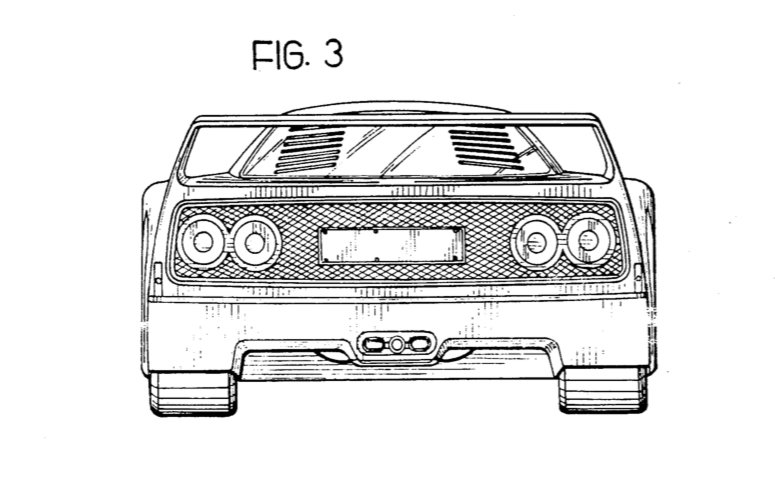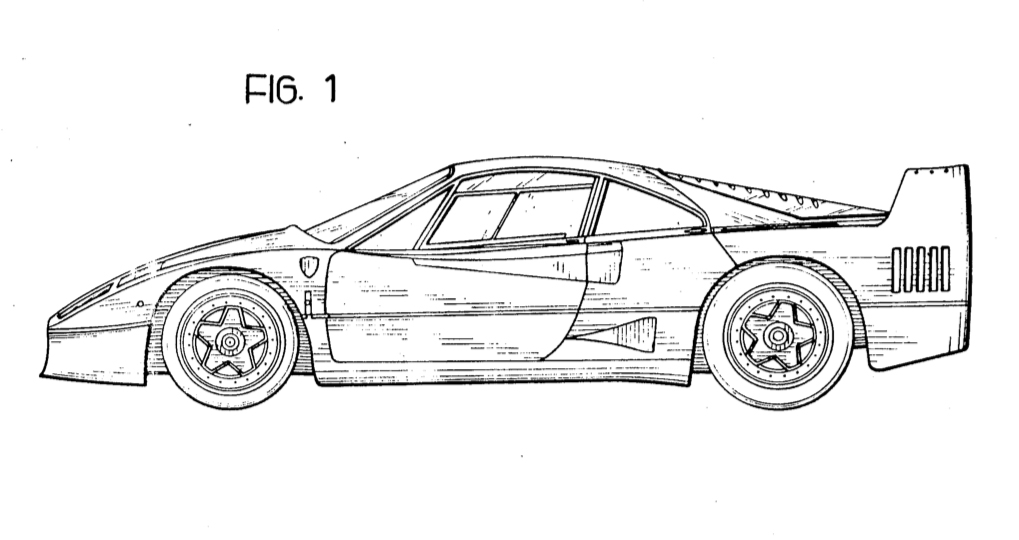A humble, fictional U.S. patent reviewer’s reaction to the original Ferrari F40 sketches
Just imagine, for a second. It’s December 1987, and you’re a mid-level employee at the U.S. Patent and Trademark office. Maybe you told your boss once at the water cooler that you’re mildly interested in cars, so he tosses a manila folder onto your desk today—a little gift to make up for the fat stack of boring applications for more computer chips (like anyone other than tech geeks will ever need those!).
You haven’t been exactly keeping up with the latest Motor Trend and Road & Track issues on newsstands, so what’s inside the folder is absolutely shocking. You nearly spit out your instant coffee. It is a Ferrari that looks so unlike any other that your hands are trembling, your eyes wide and watering as you stare at the sketches of this new supercar—the F40. It is low and wide, squared-off and with scoops and vents that look somehow tasteful and vulgar at the same time. It is simple, yet aggressive in its absolute commitment to aerodynamics.
The application says the inventor is Leonardo Fioravanti, on behalf of Ferrari, and the design went through Italy’s patent office back in June. You can’t really tell from the sketches, but it looks like the rear window isn’t even glass—some sort of Lexan plastic, maybe. And is all that covers the muffler just some black-colored mesh screen? Is this even a road car?
What you can’t see from the exterior shots is that the interior is equally purpose-driven. Exposed construction is all over the place, the dashboard is hastily covered in thin felt, and there isn’t even a radio.




The sketches, in a way, tell the basic story that the world will soon discover: that although the F40 isn’t the technological tour-de-force that the 959 represents for Porsche, it is unparalleled in terms of pure driving excitement.
Like everyone else who’s seen the Ferrari F40 for the first time, you have an irresistible urge to put this image on display. You run to the photocopier with the sheets in hand, careful not to wrinkle them, and make your large-format copies to later thumbtack onto the sad corkboard in your cubicle. Around the world, every car-nut kid was doing the same thing on their bedroom walls.
You know you’ll never drive the damn thing—maybe you won’t even ever see it. But imagining it does something to you, a fire lit in the pit of your stomach that says maybe one day you’ll quit, make a fortune investing in something crazy, and drive off into the sunset. Biting your lip, you think, “That Macintosh that came out a few years ago is pretty popular. What harm could it do to buy a few shares of Apple?”






